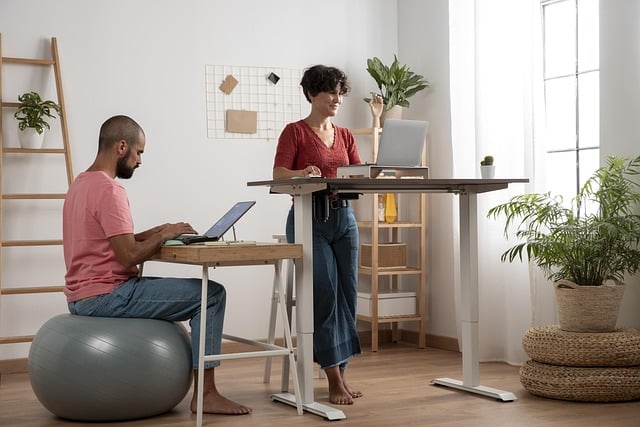As a programmer working from home, your workspace can tell how productive and healthy you are. This is true for programmers who constantly face challenges with Genus vhdl array, error synthesis scripts, and other gate-level representation issues of your designs since they can get burnout quite easily. From the chair you sit on to the lighting around you, every detail can impact your comfort and efficiency. As a matter of fact, it’s pretty common to see 50% of programmers suffering from back pain, eye strain, and neck pain. This is why it’s essential to set up an ergonomic workspace that supports your body and minimizes the risk of developing any discomfort or injury.
The good news is it doesn’t have to cost you a fortune to create a comfortable and healthy workspace. In this guide, we’ll share some essential ergonomic tips for programmers working from home. Let’s see how they’ll change your productivity.
Choose a Chair That Offers Ergonomic Features
Your chair is your throne, especially as a programmer spending long hours at the computer. When selecting a chair for your home office, prioritize ergonomic features that support your body’s natural alignment. Look for chairs with flexible, adjustable seat height and depth to keep your feet flat on the floor and knees around at a 90-degree angle. It’s also a good idea if you choose a chair with lumbar support. This chair is great to help maintain the natural curve of your spine and delete any risks of strain on your lower back. Adjustable armrests can also help prevent shoulder and neck discomfort. The last feature of ergonomic chairs to keep in mind is a swivel base, a feature to make you easily reach various spots of your workspace without strain.

Adjust Your Monitor Height and Distance
Ideally, your monitor must be positioned at eye level to promote good posture and prevent slouching. This will help you avoid unnecessary strains on your neck by looking up or down for extended periods. Additionally, maintaining an appropriate distance from your screen can also benefit your eyesight. You also want to position the monitor at arm’s length away from you to reduce the risk of eye fatigue and headaches caused by staring at a screen that is too close. All of these are simple steps to create a more comfortable and ergonomic monitor position that also supports both productivity and well-being while working from home.
Set Up Ambiance Lighting
Creating the right ambiance in your workspace can significantly impact your productivity as a programmer working from home. One often overlooked aspect is lighting. Harsh overhead lights can cause eye strain and headaches, so consider setting up ambient lighting instead. Soft, indirect light sources like desk lamps or LED strips can help reduce glare on your screen and create a more comfortable atmosphere. Choose warm white or natural light bulbs to mimic daylight and prevent straining your eyes during long coding sessions. Adjustable brightness options are also beneficial for adapting to different times of day or tasks that require varying levels of focus. Whether it’s incorporating plants for a touch of greenery, using color-changing bulbs for a creative boost, or simply finding the perfect balance between functionality and coziness in your home office space.
Install Soundproofing Walls
Do you find yourself easily distracted by outside noise while working from home? Installing soundproofing walls can be a game-changer for programmers looking to create a focused and productive work environment. By minimizing external noises such as traffic, neighbors, or household chatter, you can enhance your concentration levels and boost your overall efficiency. Soundproofing walls come in various forms, from acoustic panels to specialized insulation materials that absorb and block unwanted sounds. Investing in soundproofing solutions not only benefits your productivity but also contributes to a more peaceful and serene workspace. Whether you’re coding late at night or attending virtual meetings during the day, having a quiet environment can make all the difference in your performance.
Ensuring a comfortable and ergonomic workspace is crucial for programmers working from home. Now what’s left is to follow these tips here. Invest in your workspace now so you can enjoy long hours of coding without any physical strain or distractions. Your body will thank you for it in the long run.

